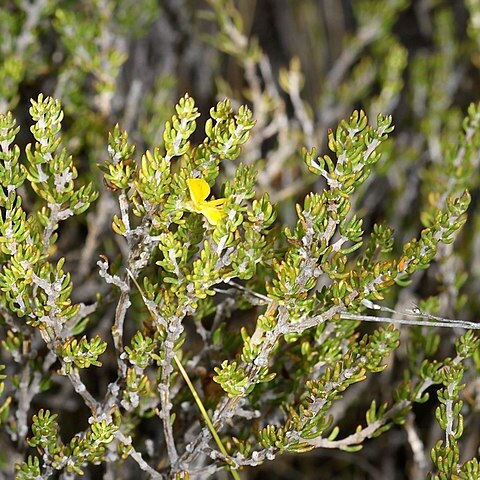Sprawling shrublet, 0.25(-0.80) m high; young branches ascending, minutely tomentose or puberulous. Leaves closely white-pubescent. Leaflets linear, 1.5-5.0 mm long, subterete, straight or slightly incurved, acute, glabrescent or often densely silvery sericeous. Inflorescences with flowers scattered. Flowers yellow or orange, drying red. Calyx: tube short-tomentose; lobes linear or subulate, acute, often subterete, slightly incurved. Petals: keel extensively silky pubescent on the lower parts; standard short-pubescent on most of back. Flowering time all year. Pod triangular lanceolate, brown-black, sparsely short-sericeous.
Sprawling shrublet to 25 cm. Leaves 3-foliolate, leaflets subterete, straight or slightly incurved, glabrous or silvery silky. Flowers solitary on tips of branchlets, yellow or orange to red or dark red, wings and keel silky, calyx shortly hairy, lobes triangular or awl-shaped, hairy.

